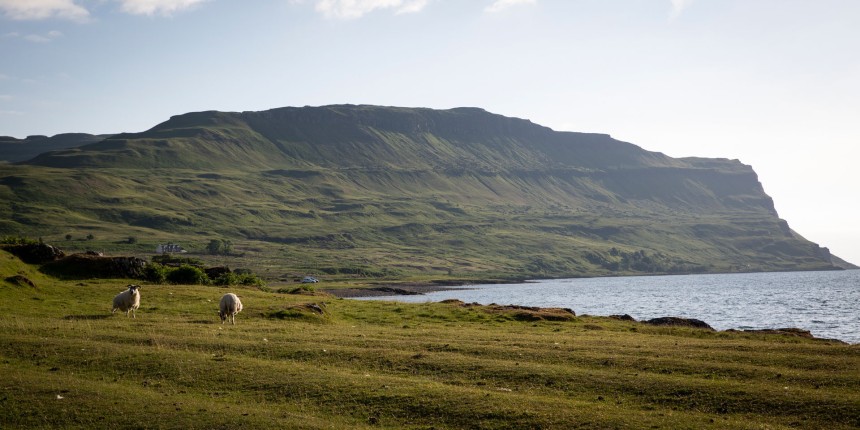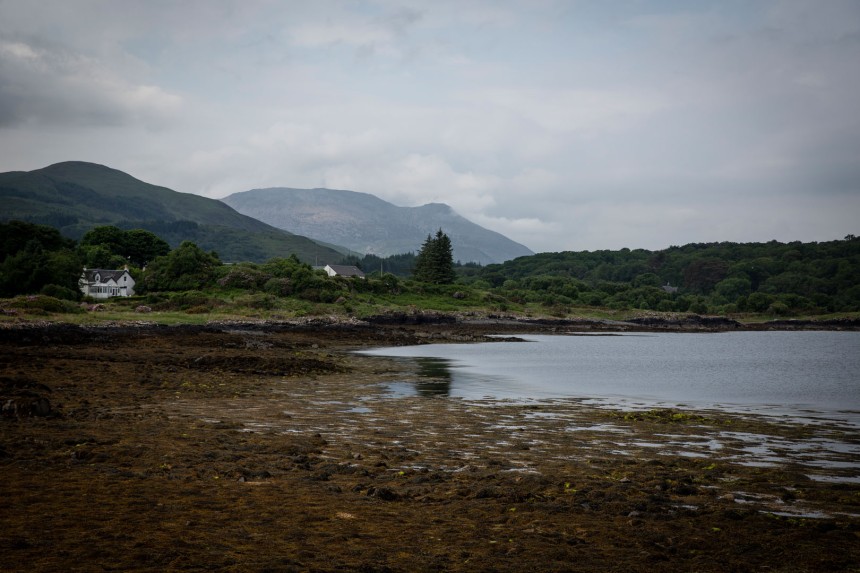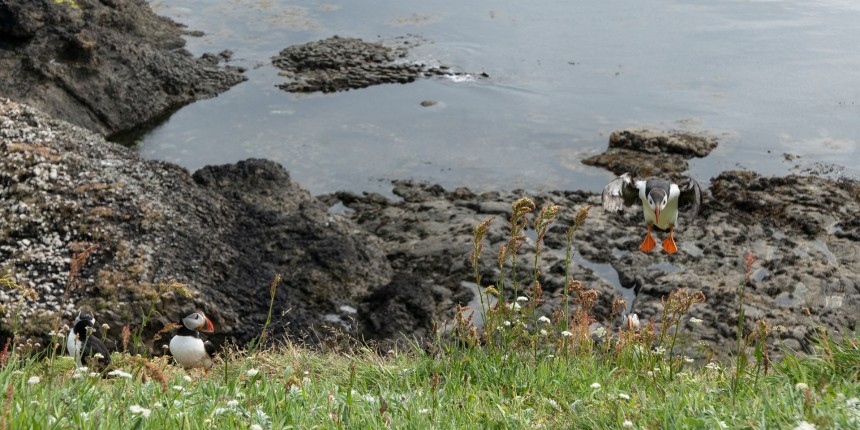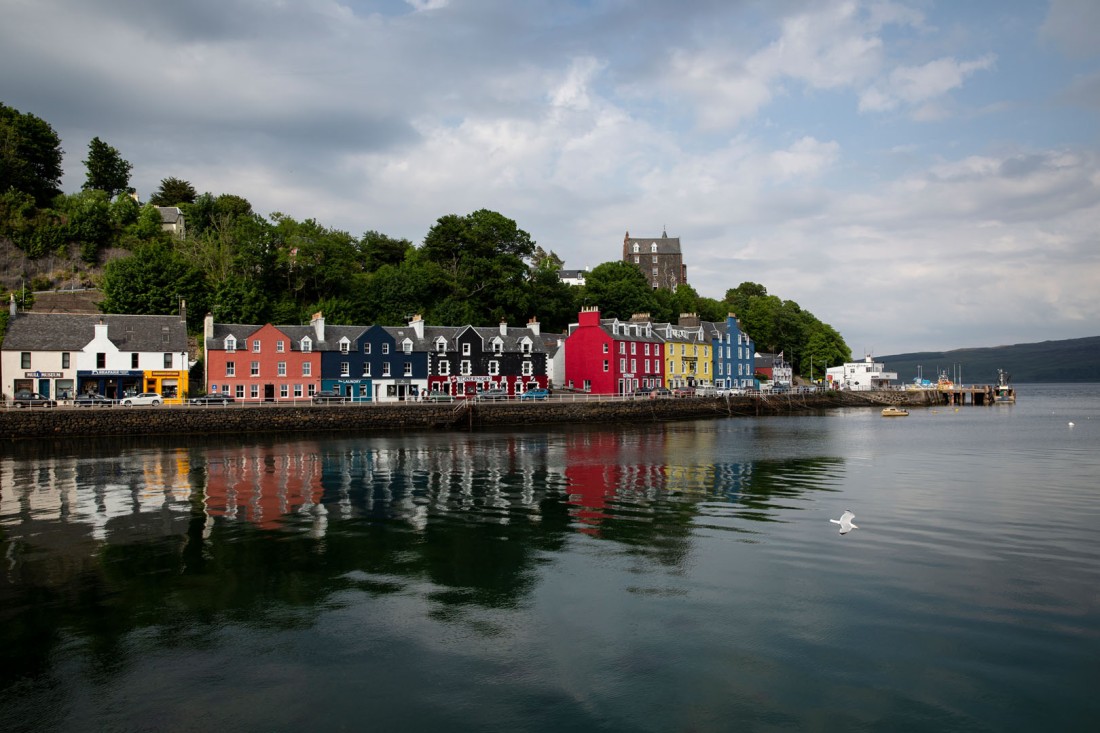Has it been a week already? Surely a year, or a day? I’m not sure. Travel does that it seems. Last Sunday seems like a distant island in my memory, but maybe only moments have passed.
These last few days have mostly been spent on the Isle of Mull. We boarded the CalMac ferry from Oban, a mountainous vessel of diesel and brine, with strange seventies carpets and cups of plastic coffee. The crossing to Craignure was only an hour long, so once on Mull we made for Salen where we found a perfect wild camping spot next to the mournful remains of the old pier. That evening we sat and watched the endless twilight as the waves murmured at our feet.

Mull is far more mountainous than Islay, or even Jura, and has the peak of Ben More (Beinn Mhòr meaning ‘great mountain’) at it’s heart. The landscape here is ceaselessly dramatic. Cloud wrapped peaks crash down into vast sea lochs via endless waterfalls. The wildlife is abundant, joyfully dominant. In a country where so much of our wildlife has been relegated to the fringes, tarmaced over for another stupefying mall, it’s a delight to be surrounded by such vitality. It’s also a delight to meet others who are passionate about the wildlife here. We spent a wonderful afternoon with an RSPB ranger, quietly watching a family of white tailed eagles from a forestry hide. These magnificent birds were hunted to extinction in Britain a hundred years ago but are now making a comeback, with three nesting pairs on Mull, as well as many more on mainland Scotland.
Cloud wrapped peaks crash down into vast sea lochs via endless waterfalls.


On Monday we took a boat trip over to the islands of Staffa and Iona. Staffa was everything I imagined it might be, a dark brooding presence on the horizon which quickly resolved to reveal the dark mouth of Fingal’s Cave and the dramatic basalt columns which give it it’s name (Stafa meaning stave or pillar in Old Norse). We approached the concrete landing jetty complete with a tinny blast of Mendelssohns’ Hebridean Overture through the ships speakers for added atmosphere. Unlike the day Mendelssohn visited, the weather was kind and we landed without difficulty to make our way across the island to a grassy slope above a sheer cliff face where the puffins had made their nests. When we arrived the puffins were out at sea, a group of dark dots floating in the bay, so we settled down to wait. The sun was warm on our faces and the sounds of the sea mingled with the murmur of conversation from our fellow sightseers. A small group of vigorous looking retirees discussed their Hebridean cruise while a man with an enormous telephoto lens cast around for the perfect spot to capture his images.
After around fifteen minutes word went round our group of floating avian friends and they lifted clear of the water as one, circling a few times before starting to land right at our feet! Our intrusion didn’t seem to bother them and they waddled about their business on bright orange feet, emitting a low burring sound.

After Staffa our boat dropped us on the island of Iona. I always imagined this famously spiritual retreat as austere and windswept, but on the day we visited the sun sparkled on the white sand beach and turquoise waters of Martyr’s Bay. As we walked through the small village to the abbey, a sense of quiet peace began to whisper in my ear. The wide horizons and brilliant blue light of this northerly isle instil a sense of tranquility and quiet reflection. Staring at the carved stone of the 1400 year old St Martin’s Cross, I think I can understand the need those distant monks felt to mark this place with something that transcended themselves. Symbols of sacred mysteries cut into living rock, the eternal human impulse to speak to the gods.
Inside the abbey itself I was quietly surprised to find a warm and companionable atmosphere. Although similar in size, this was no stern and vaulted cathedral of incense and shuffling feet. This felt like a place to come home, the heart of a compassionate way of living. This may be down to the means by which it has been restored over the last 80 years by the Iona Community. Originally a group of unemployed craftsmen from Glasgow, who came to Iona to rebuild a ruin, in the end created a unique community dedicated to peace and social justice.
…this was no stern and vaulted cathedral of incense and shuffling feet.


So many other moments from this past week stand out, wild swimming in a waterfall plunge pool, otter watching, drinking tea in the van as the wind howls outside, the ferry back to Oban after the storm and our journey on to Glencoe. Has it really only been a week?

Beautifully written. Really get the atmosphere in each place. Lovely pics. Mum
LikeLike
Beautifully written. Really get the atmosphere in each place. Lovely pics too. Mum
LikeLike